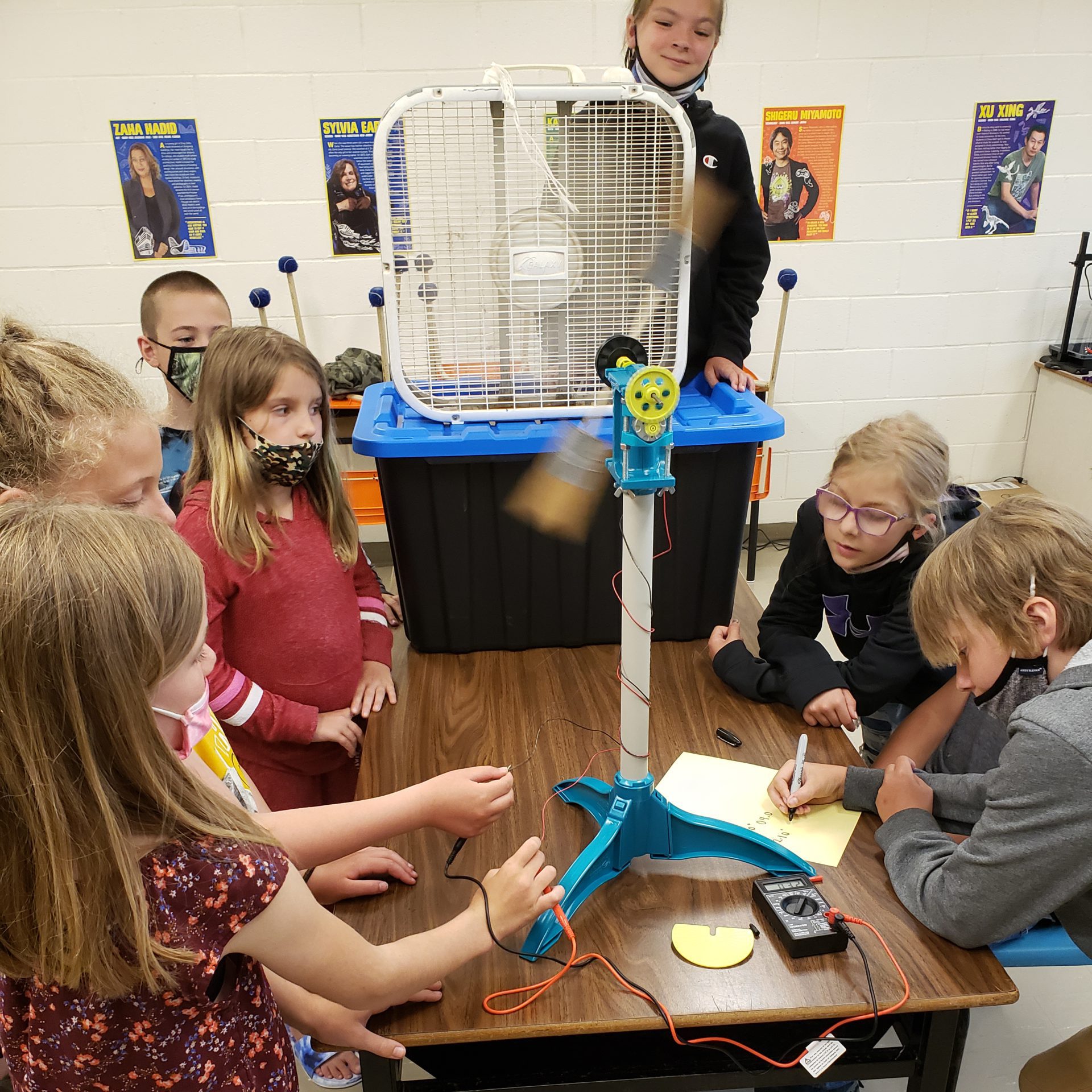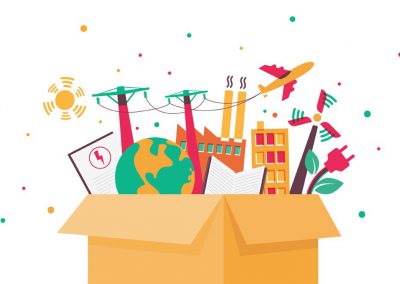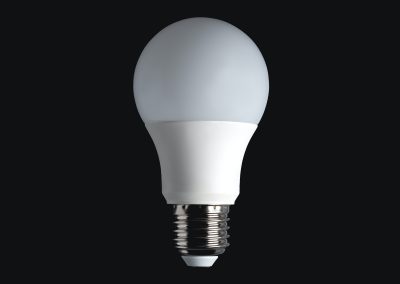*French Resources Available as Attachments
Overview
In this challenge, students are provided with materials to design and build their own wind turbine blades. The goal is to generate the greatest amount of energy possible. Students can iterate with the number, shape, size, position, materials and pitch of the blades.
If your school requires a Wind Turbine Kit, please contact the COE-Energy lead.
NB Curricular Connections
Science 6-8
- Strand: Scientific Literacy – Big Ideas: Investigation; Sensemaking; Communication
- Strand: Learning and Living Sustainably – Big Idea: Responsible and Sustainable Application
Science 9-10
- Strand: Scientific Literacy – Big Ideas: Investigation; Sensemaking; Communication
- Strand: Learning and Living Sustainably – Big Ideas: Responsible and Sustainable Application; Responsible Application and Sustainable Practices
What You’ll Need
- Download “Wind Turbine Design and Testing Sheet” and print one per group
- Wind turbine stand (includes generator) – contact the COE Energy if you’d like a kit sent to your school
- Household fan
- Multimeter, to measure output
- Wind turbine hubs, one per group
- Wooden dowels, 3 per group
- Building materials (cardboard, cereal boxes, tape, glue, etc)
Instructions
- Provide an introduction to renewable energy. This could be done by showing the following video or arranging a presentation on wind energy from The Gaia Project. Other video resources:
- Next, lay out the challenge by displaying the wind turbine stand set-up (see picture above). Let students know that their job is to design and build the blades for the wind turbine. The goal is to make the turbine generate the greatest amount of electricity by spinning as fast as possible. The students must determine the number, materials, shape, size and pitch of their blades.
- Distribute the Wind Turbine Design and Testing Sheet to the students. Designs must be completed by the students before they receive the building materials.
- Once initial designs are approved, distribute the hubs, dowels and building materials to the students. Provide time for students to assemble their blades.
- Once blades are constructed and attached to the hub, students must now test their designs by attaching the hub to the generator at the top of the wind turbine. Turn on the fan and record the output of their blades using the multimeter.
- Students should next iterate their designs in order to create the greatest amount of energy. Encourage students to start their iterations by adjusting the pitch (angle) of the blades first before altering the blade number, shape, size, etc.
Extension Ideas
- Consider pairing this activity with the speaker series videos: Overview of Wind Energy, Demystifying Wind Energy, Cap Pele Wind Turbines, or Wocawson Energy Project for a New Brunswick context around wind energy, wind turbines, and careers in wind.
- Included is the Windwise curriculum (attached, English only) developed by Kidwind for a variety of extension activities.
Reflection Activity
Global Competencies
The Global Competencies are the skills, sets of knowledges, and attitudes of a well-rounded person. They cross disciplines and contexts, and enable a person to thrive in local, virtual, and global communities.
- Critical Thinking and Problem Solving
- Innovation, Creativity and Entrepreneurship
- Sustainability and Global Citizenship
Acknowledgments
The Wind Energy Challenge is based upon the KidWind Challenge.




